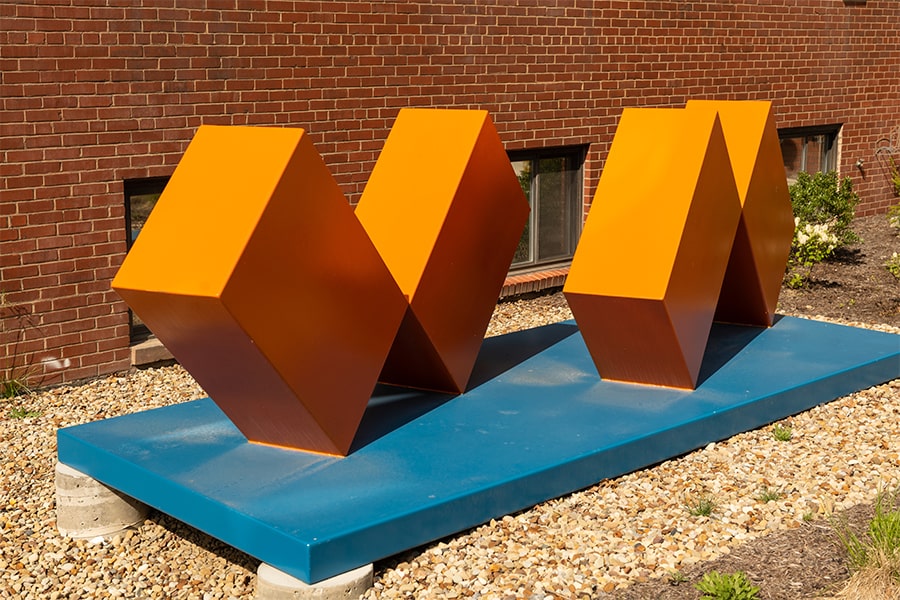Bringing ‘Two Oranges’ Back to Life
The love of public art at Carnegie Mellon is what saved “The Love of Two Oranges.” That and the work of CMU staff member Chris Deely.
The pumpkin orange steel sculpture was created in 1969 by artist and professor of sculpture Clark Winter and placed outside Wean Hall, where it would remain for 40 years. When the construction of Scott Hall required that the sculpture be moved, it was relocated to the courtyard at Doherty Apartments. Residents loved the addition, even nicknaming it “the Cheeto.”
But the move was not as positive for the sculpture itself. The trees that hung over “Two Oranges” dropped highly acidic berries on it, and over the years the berries ate through its paint, in some instances even eating down to its steel base.
Enter Deely, who was hired by CMU in 2019 as a project associate for Campus Design and Facility Development. He took on the restoration project and was faced with two immediate problems: maneuvering the project through the COVID-19 pandemic and matching the original paint color of the decades old sculpture.
“I think early on it was assumed that we could either locate records describing the original color, or, failing that, potentially re-paint the sculpture the same color it had been most recently,” Deely said at the time. “But the paint was in such bad shape, there was no way to accurately match the top layer. It was covered in tree sap.”
PPG Paints, Mosites Construction and Jendoco Construction all pitched in to the sculpture’s restoration and relocation to the entrance of Fifth Neville Apartments, where it is now visible to people passing by on Fifth Avenue.
“I come from a family that treasures old things,” Deely said. “I definitely respect and appreciate the original intent of artistic objects and how they can change, often inadvertently, throughout history.”
